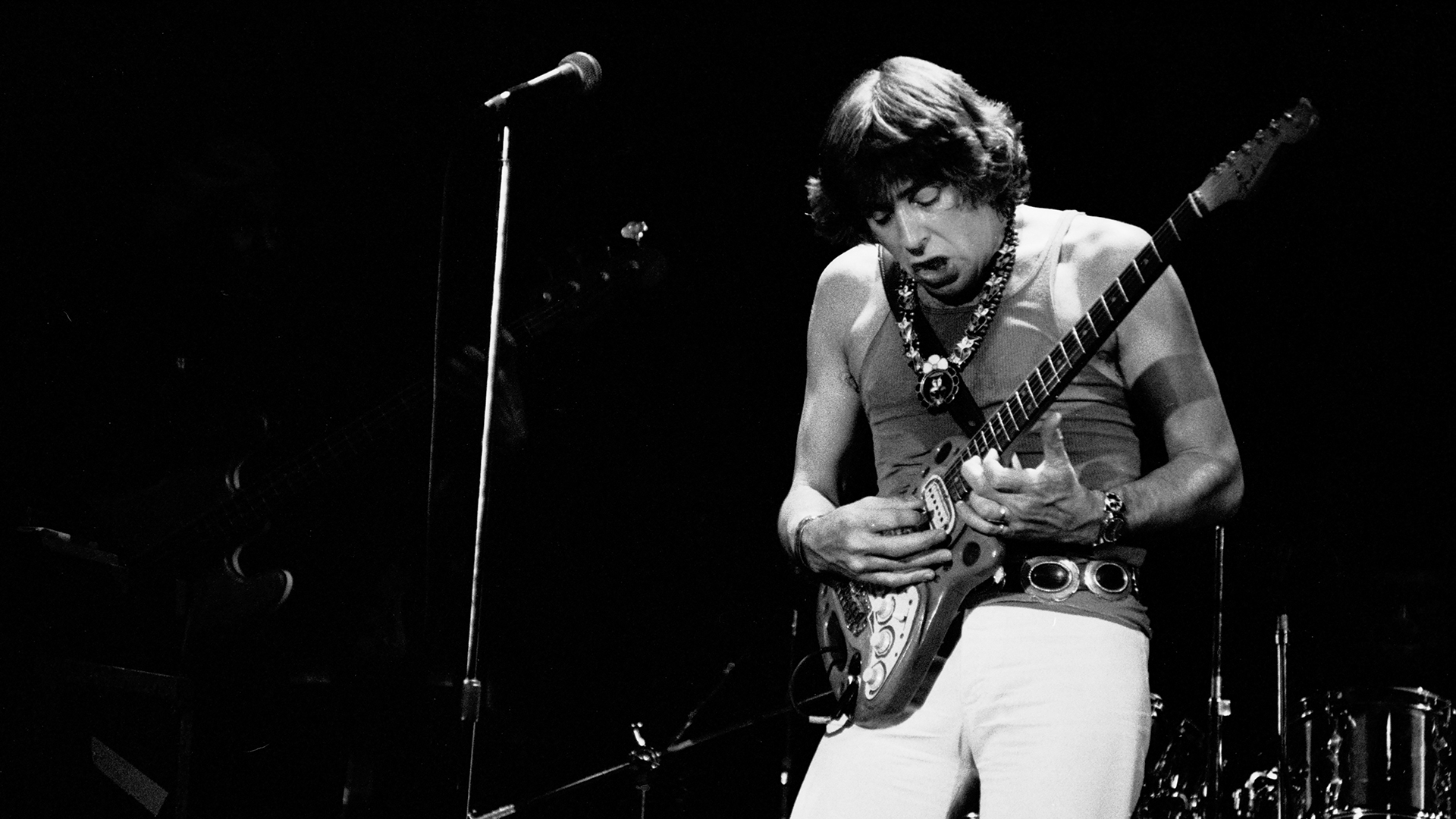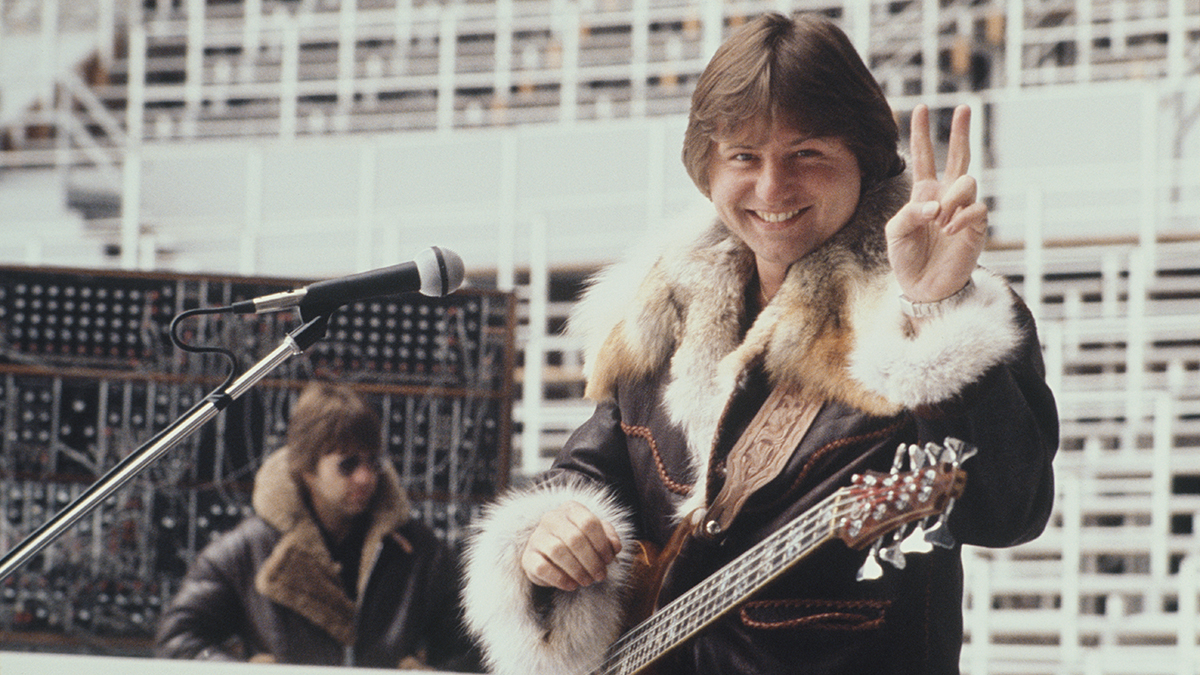“Peter Green is tasked with filling the shoes of Clapton, the man referred to as God”: Tracking the phenomenal guitar lineage of John Mayall in 12 essential releases
We trace the evolution of the six-string linchpin behind the British blues rock boom of the 1960s

John Mayall was the linchpin figure behind much of the boom in British blues rock players in the 1960s. The likes of Eric Clapton, Peter Green, Mick Taylor, Jack Bruce and John McVie all passed through the Bluesbreaker ranks and benefited from Mayall’s passionate guidance and shrewd stewardship.
Clapton put it best, in his response to the blues icon’s passing: “I want to say thank you, chiefly for rescuing me from oblivion and God knows what when I was a young man around the age of 18/19 when I decided that I was going to quit music,” said the guitar hero in his tribute to Mayall.
“He taught me all I really know and gave me the courage and enthusiasm to express myself without fear or without limit.”
A master band-leader, songwriter, vocalist, and no slouch on the guitar himself, Mayall’s early interest in the six-string came as a result of his father’s endeavors as a jazz guitarist – not to mention a record collection containing giants like Django Reinhardt and Charlie Christian.
Mayall’s own music would later represent an equally seismic reshaping of the guitar landscape, as with the help of the young Clapton – and ‘the Woman Tone’ created by a pairing of the so-called ‘Beano ’Burst’ Les Paul and a Marshall JTM45 – Mayall was able to summon a hot-rodded take on his beloved Chicago blues.
It laid the foundation for everything from Clapton and Cream to establishing the Fleetwood Mac juggernaut, the Rolling Stones recordings with Mick Taylor (everything from Let It Bleed, to Exile on Mainstreet), and on into the ’70s as Led Zeppelin took heavy blues rock to its world-conquering zenith.
Mayall released no less than 96 albums across a near-70-year career. As such, whittling this legacy down to a single playlist of his most influential and essential recordings is something of a Herculean task, albeit a pleasant one, but in honor of the late and truly great Mayall, we’ve done just that…
All the latest guitar news, interviews, lessons, reviews, deals and more, direct to your inbox!
1. I'm Your Witchdoctor backed with Telephone Blues (1965)
This Jimmy Page-produced 45 was a powerful harbinger of things to come. The intensity of this track is highlighted by Eric Clapton's incredible tone and haunting controlled feedback.
2. Blues Breakers: John Mayall and Eric Clapton (1966)
From the initial sonic blast – an aggressive slide up the neck at the top of Otis Rush’s All Your Love – the gauntlet is thrown down in terms of a new direction in British blues. Clapton’s virtuosic display on every track is nothing short of phenomenal, as he is backed brilliantly by Mayall’s keyboards and the rock-solid bass/drums combo of John McVie and Hughie Flint.
Standout tracks: Hideaway, Steppin’ Out, Double Crossing Time, Have You Heard
3. A Hard Road (1967)
Peter Green is tasked with filling the shoes of Clapton, the man referred to as God. Green proves to be more than up to the task, providing mind-blowing guitar throughout.
Standout tracks: The Stumble, The Supernatural, Someday After a While (You’ll Be Sorry)
4. Crusade (1967)
Half way through 1967, Green left the Bluesbreakers, along with McVie and Fleetwood, to form Fleetwood Mac. Mayall recruited 18-year-old Mick Taylor, who, like Green, proved himself an able replacement. Within two years, Taylor would leave Mayall’s band to join the Rolling Stones.
Standout tracks: Oh, Pretty Woman, Driving Sideways, Snowy Wood
5. Bare Wires (1968)
Aside from Taylor, this album was recorded with an entirely new lineup and was the last to be credited to the Bluesbreakers.
Standout tracks: Killing Time, Bare Wires Suite, Hartley Quits
6. Blues from Laurel Canyon (1968)
Mayall’s final Decca release features a small four-piece band, including Taylor as well as Green, who guests on one track.
Standout tracks: Laurel Canyon Home, 2401, First Time Alone (with Green)
7. Diary of a Band, Vol. 1 & 2 (1968)
This live collection features Mick Taylor and drummer Keef Hartley along with Chris Mercer and Dick Heckstall-Smith on sax. Culled from 60 hours of club recordings, it is the first of many live collections from Mayall’s personal collection.
Standout tracks: I Can’t Quit You Baby, My Own Fault, Crying Shame
8. Looking Back (1969)
This retrospective is a fantastic document of Mayall’s career, starting with his earliest Bluesbreakers recordings from 1963 up until the spring of 1969.
Standout tracks: Stormy Monday, So Many Roads, Looking Back
9. The Turning Point (1969)
For this July 12, 1969, Fillmore East performance, Mayall assembled yet another lineup, this time designed to play low volume music. The final track, Room to Move, became a minor hit for Mayall and garnered much FM radio airplay.
Standout tracks: Room to Move, The Laws Must Change, I’m Gonna Fight for You J.B.
10. Back to the Roots (1971)
This exceptional double album features a stellar band including Clapton, Taylor and Harvey Mandel on guitars, Larry Taylor on bass, Keef Hartley on drums, Don "Sugarcane" Harris on violin and Johnny Almond on sax and flute.
Standout tracks: Television Eye, Prisons on the Road, Force of Nature
11. Chicago Line (1988)
Roaring back with a new lineup of Bluesbreakers, this disc features great guitar work from Coco Montoya and Walter Trout.
Standout tracks: Chicago Line, The Last Time, Tears Came Rollin’ Down
12. 70th Birthday Concert (2003)
This live set features Clapton, his first time performing with Mayall in nearly 40 years. The double CD also features Taylor and Buddy Whittington.
Standout tracks: Grits Ain’t Groceries, I’m Tore Down, Oh, Pretty Woman
Guitar World Associate Editor Andy Aledort is recognized worldwide for his vast contributions to guitar instruction, via his many best-selling instructional DVDs, transcription books and online lessons. Andy is a regular contributor to Guitar World and Truefire, and has toured with Dickey Betts of the Allman Brothers, as well as participating in several Jimi Hendrix Tribute Tours.
- Matt ParkerDeputy Editor, GuitarWorld.com










